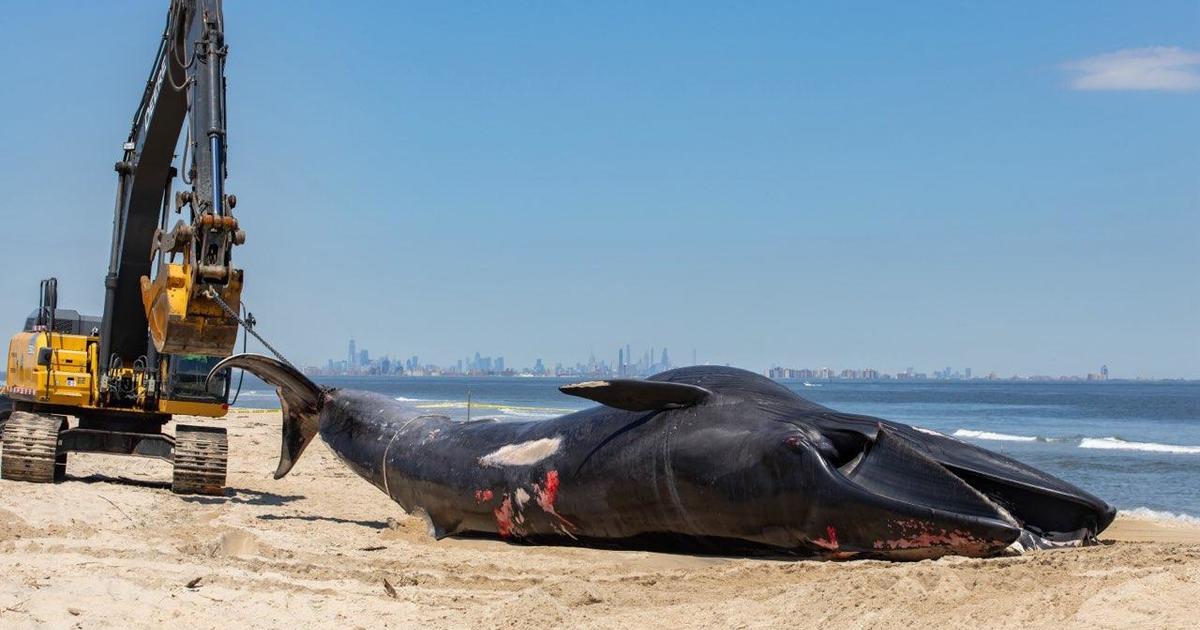On your toes: The making of ballet shoes
Faith Salie show us what goes into pointe shoes besides some very talented feet:
In the world of ballet, Christmas means one thing: "The Nutcracker"! Stages across the country fill with twirling snowflakes, leaping candy canes, and lots and lots of pointe shoes.
Tiler Peck is a principal dancer -- and one of the Sugar Plum Fairies -- with the New York City Ballet.
Salie asked, "So, how many pointe shoes do you think you go through in a year?"
"Oh, gosh! Let's see. Well, I can tell you, like, during a week, I would go through ten pairs of shoes," Peck replied.
More than a pair a day? "Yeah it depends on what you're dancing, but I like a newer pair of shoes for every single show that I do."
The company goes through more than 500 shoes a month during "Nutcracker" season.
Salie asked, "Why do pointe shoes have to be replaced so often? Why can't you get a good pair and just use 'em for a while?"
"I think it's because we're sweating in the shoes, and also we're dancing on the tips, so if there's nothing to kind of hold you up, it can be, like, really dangerous," Peck laughed.
Ballerinas began dancing on their toes in the late 1700s, when a dancer named Charles Didelot invented a system of wires to lift dancers off the ground, hovering on her toes, elongating the lines of their legs.
This inspired the creation of the pointe shoes we know today -- shoes sturdy enough to hold up a dancer without the help of wires.
And centuries later, the shoes are still made by hand. One of the most respected manufacturers is Freed of London, where shoemaker Ray Rawlings has worked for nearly 30 years.
"Every one is a challenge," Rawlings said. "Every shoe. Every dancer."
The makers usually don't meet the dancers; many have never even seen a ballet. But they say they still feel connected to the art form.
"You do get pride in what you're doing, making shoes for these dancers," Rawlings said. "They just seem to bring the shoes to life."
Each maker has their own process, creating shoes that are slightly different. And every dancer has her own specifications, so when she finds a shoe that fits, she's a loyal customer.
Salie asked, "Now if I'm your prima ballerina, and I stick with you, how do I know that my shoe was made by Ray?"
"Each maker's got our maker stamp," Rawlings replied. "Mine is the crown. So there can't be confusion! When you do get a dancer, you expect they stay for you for life, and all of their career."
"It's kind of like match-making. Like, once you find your sole-mate, you stick with them!"
The shoes might look like they're made of wood, but they aren't; each is made out of layers of fabric and paper hardened by flour paste, almost like a papier-mâché, and surrounded by satin. The shoemakers then flatten out the tip with a hammer, providing a platform strong enough to support a dancer -- but only for so long.
"So, when you put a hot, sweaty foot in there, it breaks in quick," said Linette Roe, the shoe supervisor at the New York City Ballet. "It hits its sweet zone for a while. And then it just breaks down."
"So a sweet zone is, like, one show?"
"Yeah."
Roe makes sure dancers have enough shoes to get them through rehearsals and performances, which can get pretty expensive. For the company's 101 dancers -- including women, men and apprentices -- New York City Ballet spends almost $780,000 a year on shoes.
Salie tried on a pair, and felt the effect of dancing on her toes.
There must a pointe to all this pain?
Backstage, a few minutes before the curtain went up, Salie checked in with the Sugar Plum Fairy: "All right, so are you ready? How do the shoes feel?"
"Shoes feel good!" Peck said.
"Is there any pain?"
"No. Never while you're dancing. I think because, you know, adrenaline and everything. Maybe sometimes afterwards, you know, they're a little sore and swollen. But, you know, we're so used to it."
"And you're in the land of sweets. Nothing hurts!"
"Yeah, I know. I said this is my first show this season, and I was, like, watching the tree grow backstage, and it just, like, never gets old. It's so magical!"
And with that, the Sugar Plum Fairy is ready to put her best foot forward.
See also:
- Almanac: "The Nutcracker" ("Sunday Morning," 12/18/16)
- "The Nutcracker": Stepping into a holiday tradition ("Sunday Morning," 12/20/15)
- The taskmaster behind "The Nutcracker" ("Sunday Morning," 12/23/07)
For more info:
- New York City Ballet
- "The Nutcracker" at New York City Ballet (performances through December 31)
- Follow @nycballet on Twitter, Facebook, Instagram and YouTube
- Pointe shoes, from Freed of London
- Follow @TilerPeck on Twitter and Instagram
Thank you to Rae Kebede, Kyle Williams and Lila Driscoll from Ballet Academy East in New York City!









